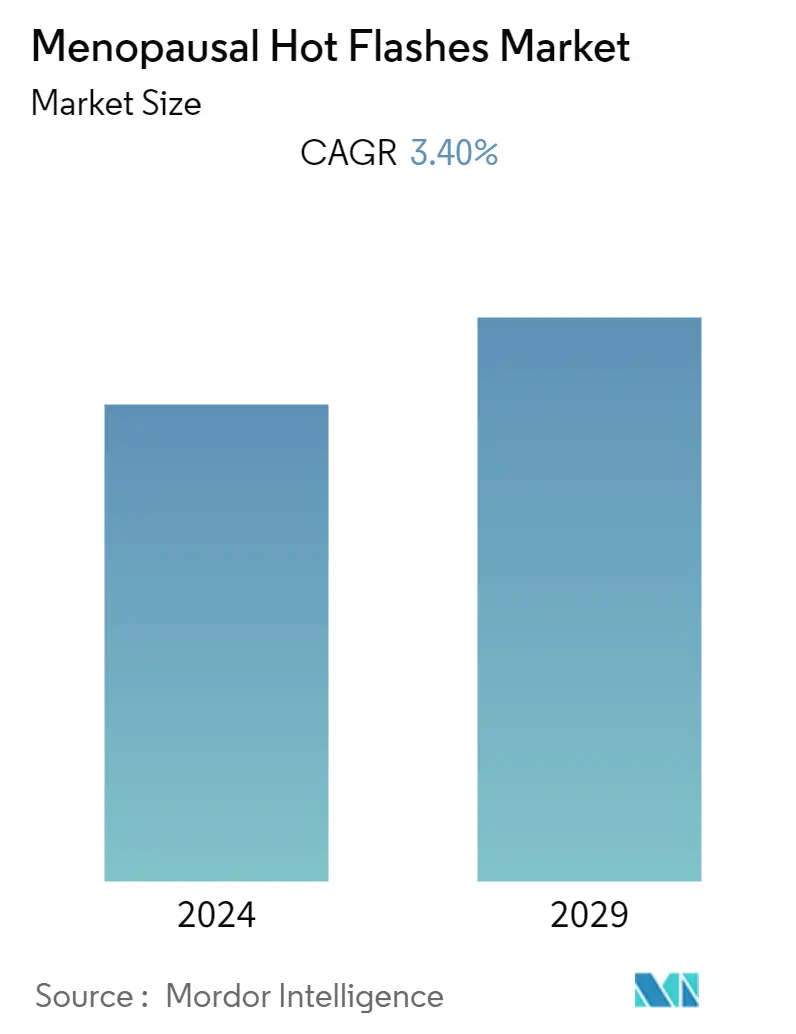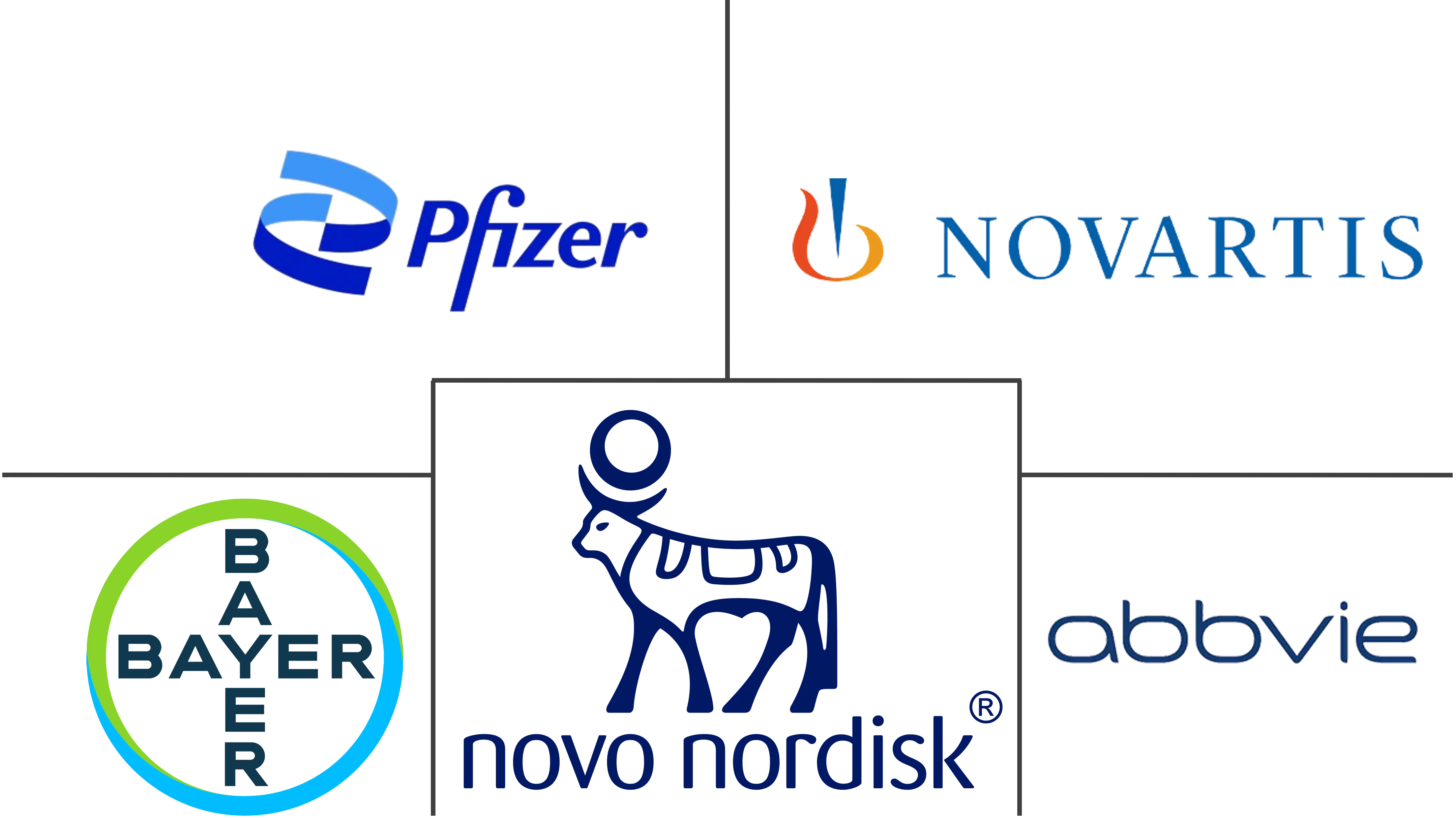Market Size of Menopausal Hot Flashes Industry

| Study Period | 2021 - 2029 |
| Base Year For Estimation | 2023 |
| CAGR | 3.40 % |
| Fastest Growing Market | Asia Pacific |
| Largest Market | North America |
| Market Concentration | High |
Major Players
*Disclaimer: Major Players sorted in no particular order |
Need a report that reflects how COVID-19 has impacted this market and its growth?
Menopausal Hot Flashes Market Analysis
The menopausal hot flashes market is projected to register a CAGR of 3.4% during the forecast period.
The COVID-19 pandemic has posed severe challenges to healthcare systems and has drastically cut down in- and outpatient services in hospitals and clinics. The lockdown measures and restrictions imposed by the government have impacted the lives of patients suffering from menopausal symptoms. For instance, per an article published in Women and Health in May 2021, women suffering from the uncomfortable symptoms of perimenopause, such as vasomotor symptoms (VMS), have had trouble finding doctors and procuring menopausal hormonal therapy. This has impacted the demand for menopausal drugs and therapies, slowing the market growth. However, with the released COVID restrictions and resumed treatment services, the studied market is expected to recover from the decline of the COVID-19 pandemic in the next two-three years.
The factors such as the rising incidence of menopausal vasomotor symptoms and technological advancements in developing new drugs for treatment are boosting the market growth. For instance, as per an article published in Women's Health in June 2022, an online survey was conducted in the United Kingdom from 19 May 2021 to 26 May 2021 to evaluate attitudes, knowledge, and symptoms experienced by women during menopause in women older than 40 years. It has been observed that 68.9% of the women experienced mood swings, 68.3% experienced brain fog, and 66.8% experienced fatigue symptoms during their menopause stage. In addition, other psychological issues, including irritability, poor concentration, poor memory, lack of motivation, reduced confidence, and anxiety, affect their quality of life. This is expected to increase the demand for effective drugs and hormonal therapies to relieve these symptoms, propelling the market growth.
Additionally, as per an article published in the International Journal of Reproductive BioMedicine in September 2021, it has been observed that about 50-85% of women experience hot menopausal symptoms globally. In addition, as per the same source, the highest prevalence of menopausal hot flashes symptoms was reported in Western countries and the lowest in Asia. This is expected to fuel the demand for hormonal as well as non-hormonal therapies for treating menopausal symptoms, hence bolstering the market growth.
Similarly, as per a study published in NCBI in December 2021, hot flashes were among the most common types of menopausal vasomotor (VMS) symptoms, affecting up to 74% of perimenopausal women. About 65% of women complain of hot flashes for more than two years, and 36% cry for more than five years. Therefore, the increasing incidence of menopausal vasomotor symptoms is a significant factor contributing to the market growth of menopausal hot flashes.
Furthermore, the increasing focus on research for the development of treatment of hot flashes is also propelling the market's growth. For Instance, in June 2022, Astellas Pharma Inc. submitted a New Drug Application (NDA) for fezolinetant to the United States Food and Drug Administration. Fezolinetant is an investigational oral, non-hormonal compound seeking approval to treat moderate to severe vasomotor symptoms (VMS) associated with menopause. Also, in October 2021, Bayer commenced the Phase III clinical development program OASIS to evaluate the efficacy and safety of elinzanetant, a first-in-class, non-hormonal, once-daily, oral, dual neurokinin-1,3 receptor antagonist, for the treatment of vasomotor symptoms during menopause.
Moreover, in February 2021, Astellas Pharma Inc. reported positive results from the Phase III study of pivotal SKYLIGHT 1 and SKYLIGHT 2 (fezolinetant), an oral, non-hormonal compound being evaluated for the treatment of moderate to severe vasomotor symptoms (VMS) and hot flashes.
Thus, owing to the factors mentioned earlier, such as the high prevalence of hot flashes, increasing research and development studies are expected to drive the market's growth over the forecast period. However, the side effects associated with hormonal products and the availability of generic medicines are expected to hinder the development of the menopausal hot flashes market over the forecast period.

